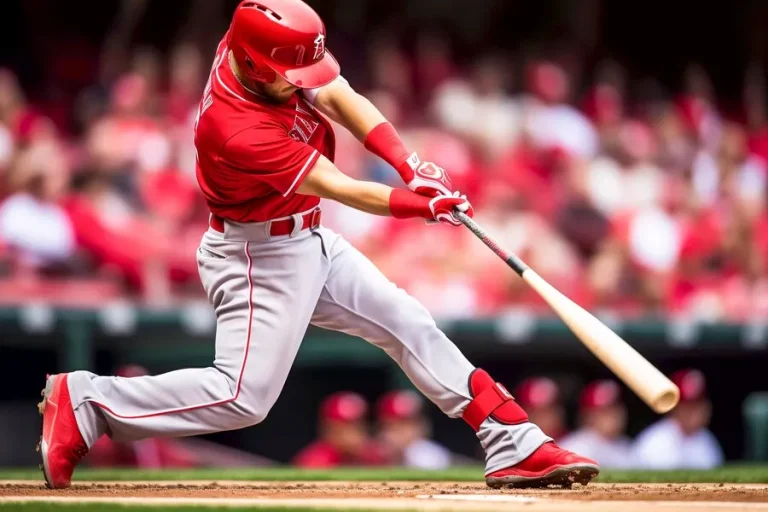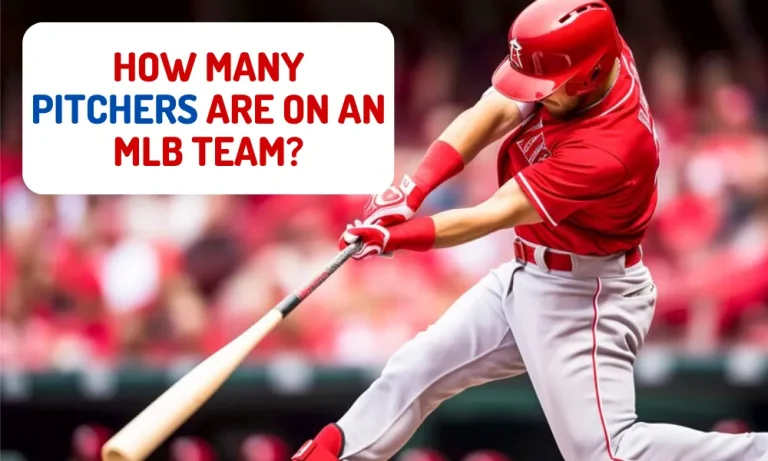How Many Players are there Across all MLB Teams?
Are you a baseball fanatic? Do you find yourself pondering over the number of players in Major League Baseball (MLB) teams? If so, you’re in the right place! Understanding the player count across all MLB teams can provide valuable insights into the game and its dynamics. In this blog post, we will delve into the world of MLB rosters, exploring the factors that determine the number of players and why it’s essential to keep track of player counts. So, let’s dive in and answer the burning question: How many players are there across all MLB teams?
The Roster Size of an MLB Team
The roster size of an MLB team refers to the number of players that make up the team’s official roster. The standard roster size for an MLB team is typically 26 players. This includes both position players and pitchers. However, it’s important to note that the roster size can vary depending on certain circumstances.
When we talk about the roster size, we often distinguish between the active roster and the expanded roster. The active roster consists of the players who are eligible to play in each game. Usually, the active roster includes 26 players. On the other hand, the expanded roster refers to the additional players beyond the active roster, who are available to be called up to the team during certain periods of the season, such as September call-ups.
Several factors can influence the roster size of an MLB team. One such factor is the league rules and regulations. The MLB has specific guidelines regarding the number of players allowed on the active and expanded rosters. Additionally, injuries to players can also impact the roster size, as teams may need to call up replacements. Moreover, strategic decisions made by the team’s management, such as carrying an extra pitcher or position player, can also affect the roster size.
How Many Players Are on the Active Roster?
When it comes to the active roster of an MLB team, the number of players allowed can vary. Generally, there are 26 players on the active roster. However, this can change depending on certain circumstances. The active roster is made up of both position players and pitchers.
Position players refer to players who specialize in playing specific defensive positions, such as outfielders, infielders, and catchers. These players contribute primarily on offense, with their batting and base-running skills. Pitchers, on the other hand, are responsible for throwing the ball and preventing the opposing team from scoring. They can be categorized into starting pitchers, relief pitchers, and closers, each with their specific roles.
Several factors can impact the number of players on the active roster. One such factor is the team’s strategy and game plan. Depending on the style of play, a team may choose to have more pitchers or position players on their active roster.
Additionally, injuries to players can also affect the number of players on the active roster, as teams may need to call up replacements. Moreover, league rules and regulations can also influence the roster size, as the MLB has specific guidelines regarding the number of players allowed.
How Many Players Are on the Expanded Roster?
The expanded roster in MLB refers to the additional players beyond the active roster who are available to be called up to the team during certain periods of the season. The purpose of the expanded roster is to provide teams with more flexibility and depth, especially during critical stages of the season, such as September call-ups.
The number of players allowed on the expanded roster can vary. While the active roster consists of 26 players, the expanded roster can include up to 40 players. This allows teams to have a larger pool of players to choose from, giving them the ability to make strategic decisions based on the specific needs of the team.
Several factors determine the size of the expanded roster. One factor is the league rules and regulations. The MLB sets guidelines on how many players can be on the expanded roster. Additionally, the stage of the season can also impact the size of the expanded roster. For example, in September, teams often take advantage of the expanded roster to call up promising prospects or provide rest for key players.
How Many Players Are There in the Minor League System?
The minor league system in MLB serves as a developmental pathway for young baseball players aspiring to make it to the major leagues. It consists of multiple levels or tiers, each with its own teams and players. Let me provide you with an overview.
The minor league system comprises various levels, including Triple-A, Double-A, Single-A (Advanced and Regular), and Rookie League. Each level has a different number of teams and players. For instance, Triple-A usually has 30 teams, while Double-A and Single-A levels may have around 30-40 teams collectively. The number of players on each team can vary, but it usually ranges from 25 to 35 players.
Several factors can influence the number of players in the minor league system. One factor is the organization’s budget and resources, as they need to allocate funds for coaches, facilities, and player salaries. Additionally, injuries, promotions, or demotions within the system can impact the number of players at each level. Furthermore, MLB rules and regulations can also play a role in determining the number of players, as there are specific guidelines regarding roster sizes and player movements within the minor league system.
How Many Players Are There in the MLB Draft?
The MLB draft is an annual event where teams select eligible amateur players to join their organizations. Let’s delve into the details of the MLB draft process.
The number of players eligible for the MLB draft can vary each year. Generally, any player who has graduated from high school or completed three years of college is eligible for the draft. Additionally, players from non-U.S. territories or foreign countries can also participate. The exact number of eligible players can be quite substantial, often reaching thousands.
Several factors can affect the number of players ultimately drafted. First and foremost, the talent pool of eligible players plays a significant role. Scouts and evaluators assess the skills and potential of these players, which helps teams make their selections.
Additionally, the draft order, determined by the previous season’s standings, influences the number of players chosen. Teams with earlier picks have the opportunity to select more players.
Other factors that can impact the number of players drafted include the specific draft rules established by MLB, such as bonus pool limitations and signing bonus spending limits. These rules can influence teams’ strategies in terms of the number of players they select and the financial considerations associated with signing them.
How Does Player Movement Impact the Total Number of Players?
Player movement is a crucial aspect of MLB, as it involves trades, free agency, and promotions/demotions within the league. Let’s explore how player movement affects the total number of players in MLB.
Player movement in MLB occurs through various means. Trades allow teams to exchange players with one another, while free agency enables players to sign with new teams once their contracts expire. Additionally, promotions and demotions within the league allow players to move between the major leagues and minor leagues based on their performance and team needs.
Player movement can impact the total number of players in MLB in several ways. When teams trade players, it can result in an increase or decrease in the number of players on their rosters. For example, a team might trade multiple players for a single player, leading to a decrease in the total number of players in the league. Conversely, if a team acquires multiple players in a trade, the player count will increase.
Free agency also plays a role in player movement. When players become free agents and sign with new teams, it can affect the number of players on each team’s roster. Some teams may choose not to re-sign certain players, leading to a decrease in the player count, while others may sign free agents to fill roster spots, increasing.
FAQs
How many players are there in total across all MLB teams?
The total number of players across all MLB teams can vary throughout the season due to roster changes, but typically there are around 750 players.
Are all players on an MLB team’s roster eligible to play in a game?
No, only a limited number of players, usually 25 to 26, are eligible to be active and play in each game.
How many pitchers are typically on an MLB team’s roster?
MLB teams usually carry around 12 to 13 pitchers on their roster, including both starters and relievers.
Are there any restrictions on the number of position players on an MLB team’s roster?
No, there are no specific restrictions on the number of position players. However, teams typically have a mix of infielders, outfielders, and catchers.
Can MLB teams call up additional players from the minor leagues during the season?
Yes, MLB teams can call up additional players from their minor league affiliates during the season to provide depth or address specific needs.
Conclusion
The number of players across all MLB teams is a dynamic and ever-changing aspect of the game. From the active roster to the expanded roster, the minor league system, and the MLB draft, various factors influence the player count. Keeping track of player counts is not only important for fans who want to stay updated but also for analysts who aim to gain deeper insights into team strategies and player development.
As the MLB landscape continues to evolve, so too will the player counts. So, next time you watch a game, take a moment to appreciate the intricate web of players that bring the sport to life. How many players are there across all MLB teams? The answer lies in the heart of America’s favorite pastime.






